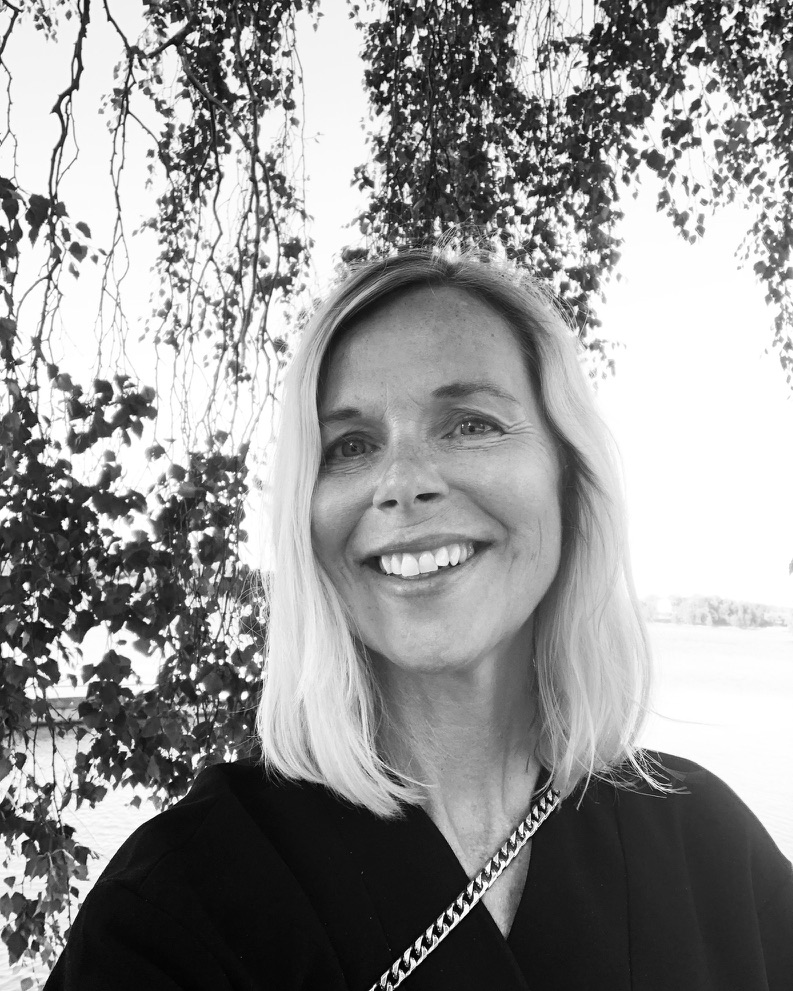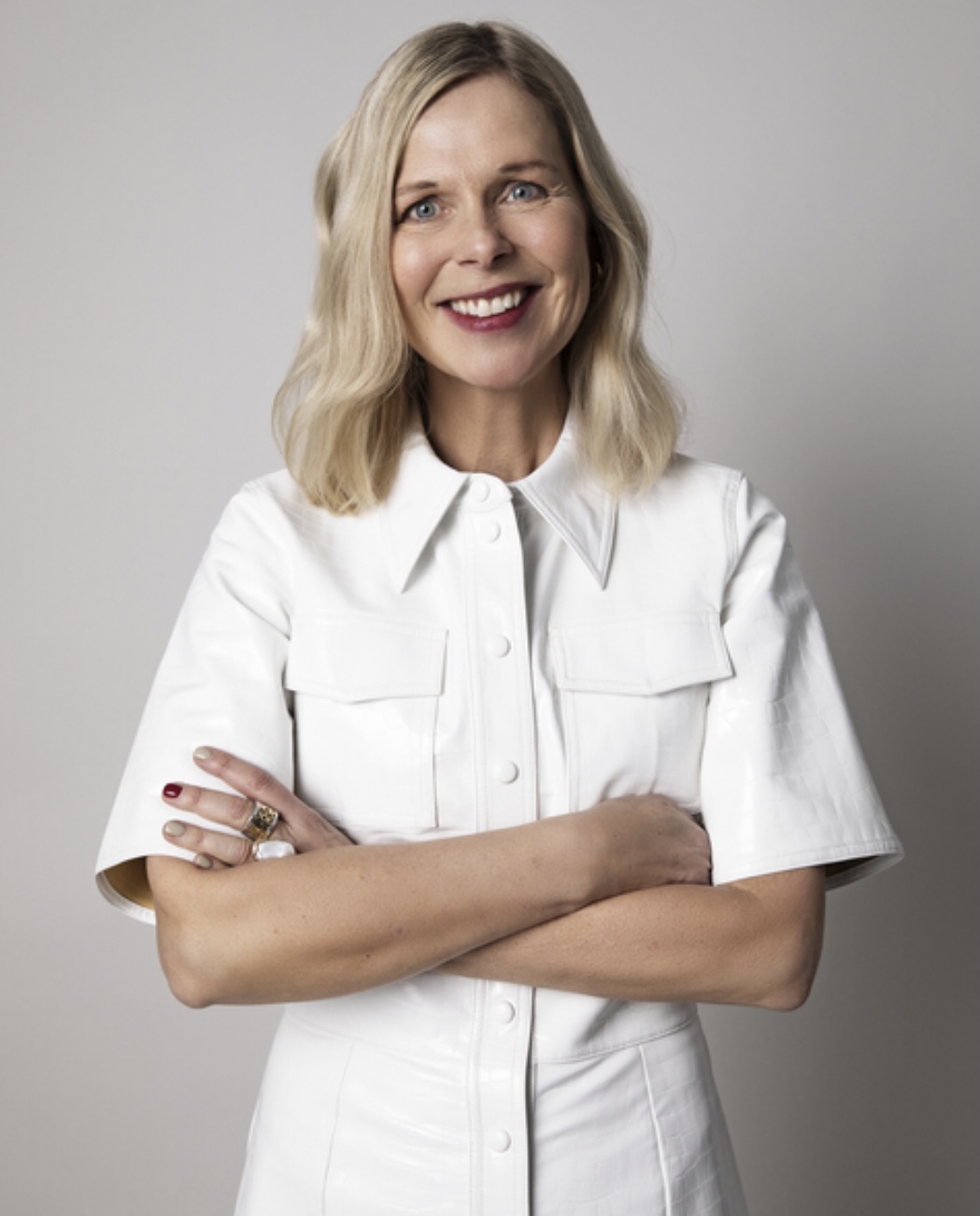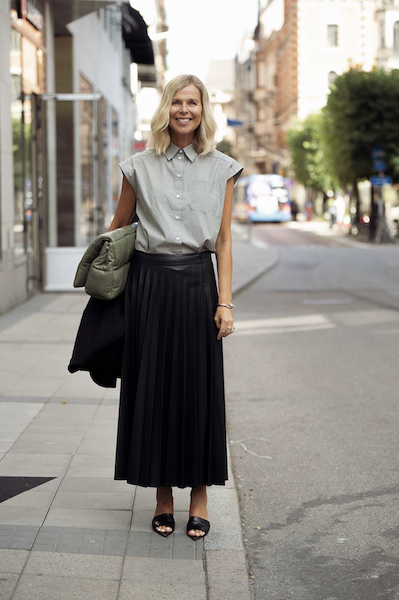V Sits Down with Catarina Midby—Champion of Sustainability and the Powerhouse Taking Charge of Sweden Fashion Week
Formerly a fashion editor and then head of sustainability at H&M, Catarina Midby shares where her career has been and where it’s headed, with a continuing emphasis on bettering the industry.

A true powerhouse in the sustainable fashion space, Catarina Midby has long been an advocate for evolving the fashion industry towards a model of wasting less and reusing more. Currently the Secretary General at the Swedish Fashion Association, Midby is working to create a new kind of fashion week in Sweden. With the country’s fashion industry priorities already centered around sustainability, clean and wearable design, and moderate pricing, there is much opportunity to expand Sweden Fashion Week’s reach across continents.
Before taking on her current role at the Swedish Fashion Association, Midby led an impressive career throughout an array of realms within the industry. From fashion editor at Elle Sweden magazine to fashion director at the Swedish fashion publication Damernas Värld, Midby then found her footing in sustainability during a 16 year stay at fashion conglomerate H&M. During her time at H&M, Midby was able to help redefine what it means for a fast fashion brand to reduce its environmental impact. Dabbling in yet another foray of fashion, Midby then founded her own clothing store, Midby Studio, which she has had to put on pause as she assumes her role organizing Swedish Fashion Week. We weren’t lying when we said Midby has had quite an impressive career journey.
V Magazine was lucky enough to sit down with Midby to learn more about her path in the fashion and sustainability spheres, and hear what’s in store for her next jaunt at the Swedish Fashion Association—which will no doubt be just as successful as her past endeavors. Read and revel on below.

Mathias Rosenzweig: Can you tell me about your career in fashion, and when you pivoted to focusing on sustainability?
Catarina Midby: I began my 30 plus years in fashion at the London College of Fashion, studying fashion journalism and fashion history, before joining the Elle Sweden team as a fashion editor as the magazine launched in Sweden in 1987. Four years later I moved back to London and worked remotely for Elle from there as well as freelancing as a fashion stylist with Streeters agency. In 1995 I moved back to Stockholm again and joined the other big Swedish fashion monthly, Damernas Värld, as a fashion director. But it was at H&M, where I was hired in 2003 as the head of fashion PR initially but moved on to working with the designers and seasonal trends, where my passion for sustainability in fashion developed. We, the trend group, learnt that 80% of a product’s impact on people and the planet is established in the design process, and realised that we could make a difference.
MR: So that was a pivotal moment when you decided to look more into sustainability?
CM: Yes! Studying a garment’s lifecycle we understood where the most urgent changes needed to happen, and then went on to learn how to go about it, focusing on materials first, or rather cotton, and then the user phase – washing, tumble drying and ironing – and communication. The first H&M Conscious collection made with more than 50% of sustainable materials launched in 2007 and new sustainable wash care labels were introduced just a few years later. In 2013 we had garment collecting service in all H&M stores and recycled more than 90% of unwanted clothes and textiles with our recycling partner I:Co.
Today sustainability is a hygiene factor in our industry and we’re all aiming for Circularity. Young people study to become sustainability experts and technology provides solutions for sustainable practices and processes.
MR: When it comes to sustainability, it is something every brand claims they are doing. How can you tell if a brand is actually sustainable?
CM: Good question, and I wish I had a simple and clear answer to it. Since I left H&M to start up my own brand, which I haven’t really pursued since being offered this position I have now, as secretary general at the Swedish Fashion Association, I have worked with sustainability from various parts of the industry. As a small start up you need to study the entire value chain and make sure you have the right third party accredited certifications and that you choose the best possible solution for every single step. The industry is collaborative and if you are a small brand you can follow the footsteps of the more established ones that have resources to research and develop best practice.
As a big brand with resources to invest in the future of fashion, you need to be at the forefront and work globally with other big brands to achieve real change. As a customer, and now that we all shop online, we need to study the brands that we buy from and make responsible choices. Sadly, many brands are afraid to communicate at all for fear of being accused of greenwashing. I wish we had one common certification or method to measure climate and social impact to make this easier, but so far we don’t. Legislation would help but the industry is global so it needs to reach worldwide.
MR: Fashion isn’t really a necessity and can thus be deemed wasteful as a whole. That said, people are going to continue to want to buy clothes. Do you feel that your role is thus to limit the inevitable harm that the industry causes?
CM: I think we need to learn how to have a balanced way on how we use fashion, that maybe we also use some of the new circular business models. For instance, for some parts of our wardrobes, we don’t need to buy party dresses, you can really rent those. And swapping can be fun. People are always going to want to express themselves, and we can’t stop producing things altogether because there are many people depending on jobs in this industry and we still need new clothes. We have talked about basics and worn sweatpants working from home during COVID, but now I think people are ready to dress up a little bit.
We are an industry thriving on change, adapting to new situations, learning and changing the way we work, communicate and offer fashion. I think the fashion industry can be an example and an inspiration for other industries.
MR: Can you tell me a bit more about Stockholm Fashion Week?
CM: We are aiming to have our own kind of concept and should not try and compete with anyone. And the best thing of all would be if we would all collaborate between the Nordic countries and that we could do something together. We have sustainability and we have a different style, clean cut, wearable and functional, quite moderately priced clothes. And we are doing extremely well with Swedish Fashion, for instance, in Asia where they seem to love Swedish brands. We are not an established fashion country internationally like France or Italy, but we have sustainability and we have the technology and we also have a certain kind of aesthetic, which I think attracts people. And the industry represents 11% of Swedish exports so it is important to Swedish business.
The industry here is pretty diverse and inclusive. What we aimed for with SFW was to make it free and flexible so brands and followers could participate with different formats and the way it suited them best. We don’t know what the new normal for fashion weeks will be, and need to be open to trying things, evaluating and adapting to what is best for the industry as well as for people and the planet.

Discover More
